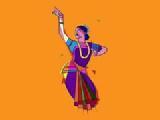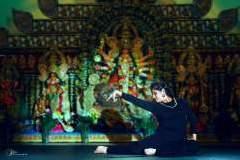Introduction:
- Introduce Bharatanatyam as a classical Indian dance form known for its rich tradition and expressive elements.
- Emphasize the significance of mudras as a fundamental aspect of Bharatanatyam, used to convey stories, emotions, and spiritual concepts.
Section 1: Understanding Bharatanatyam Mudras
- Provide an overview of the role of mudras in Bharatanatyam.
- Discuss how the hand gestures are categorized and how they are integrated into the dance vocabulary.
- Explain the precision and meaning associated with each mudra.
Section 2: Common Mudras in Bharatanatyam
-
Asamyukta Hasta (Single-Handed Gestures):
- Explore the use of individual fingers and their combinations.
- Discuss how each combination conveys specific meanings and emotions.
-
Samyukta Hasta (Double-Handed Gestures):
- Emphasize the coordination of both hands to create more complex expressions.
- Discuss the storytelling aspect through the use of double-handed gestures.
Section 3: Expressive Elements and Interpretations
- Break down the mudras used to convey various emotions such as love, anger, joy, and sorrow.
- Discuss the role of mudras in depicting characters, narratives, and mythological stories.
Section 4: Practical Session
- Demonstrate a few basic mudras and their applications in dance.
- Guide students in practicing the hand gestures with attention to precision and expression.
Conclusion:
- Summarize the significance of mudras in Bharatanatyam as a language of expression.
- Encourage students to delve deeper into the emotive and narrative aspects of mudras in their dance practice.
Q&A Session:
- Allow students to ask questions about specific mudras, their meanings, or their applications in dance.
- Discuss the importance of continuous practice and refinement in mastering the art of Bharatanatyam mudras.
This class structure aims to provide students with an understanding of the role of mudras in Bharatanatyam, exploring their expressive and storytelling elements. It combines theoretical knowledge with practical application to enhance students' appreciation and proficiency in using mudras within the context of this classical dance form.






